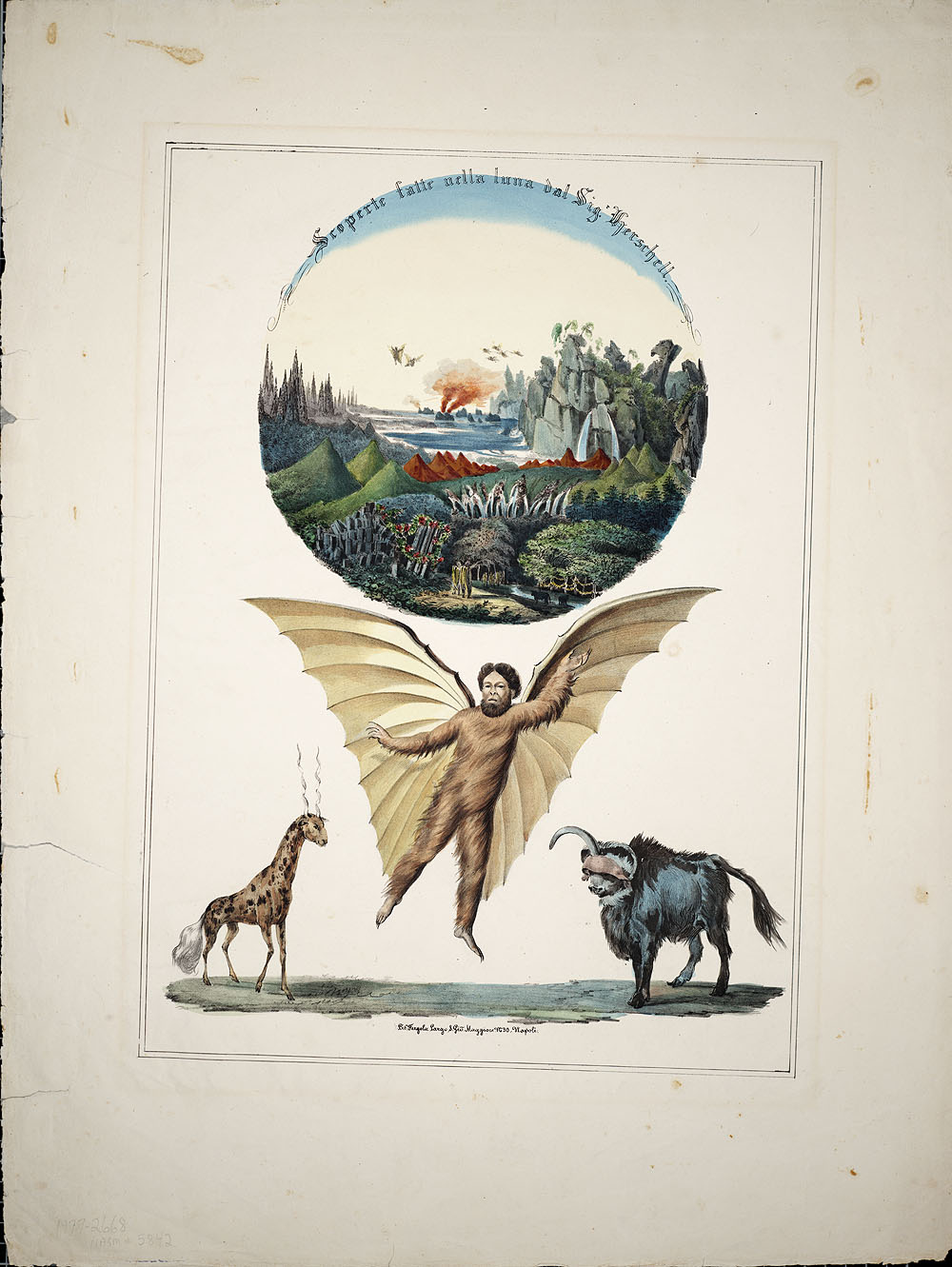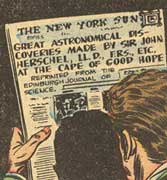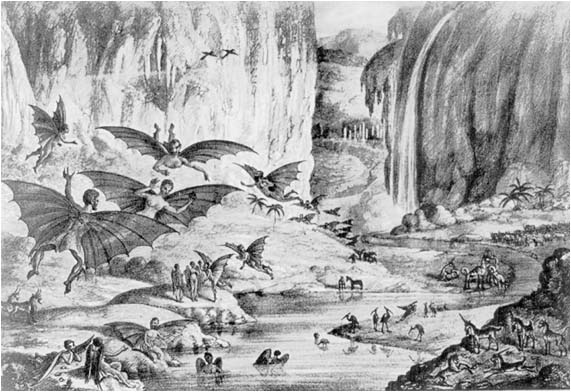The Great Moon Hoax of 1835
The New York Sun printed a series of articles that became known as the Great Moon Hoax, beginning on August 25, 1835. Among the claims were that Earth’s Moon contained the trappings of civilization, including animal life and even buildings.
The first day’s article was heavy on the technical detail, including reporting that Herschel’s new telescope had a magnification 42,000 times stronger than any telescope then known. The second day’s article asserted that Herschel had observed, among other things, large areas filled with blood-red poppy flowers and a group of blue unicorns sporting beards. Another observation reported was of a round amphibian-like creature rolling along a beach. On day three, readers discovered that the Moon had quartz crystal cliffs and erupting volcanoes. Other animal life reported on day three included elk, horned bears, miniature zebras, and tail-less upright-walking beavers that lived in wooden buildings and used fire. One of these beaver-like creatures was reported to be carrying its young.
Articles on day five and day six expanded on information presented in the first four days. Circulation of the Sun, which already enjoyed a readership that was used to reading sensational stories about crimes and disasters, was said to have increased dramatically in the wake of the publication of the Moon articles. The Sun soon published a compendium of the articles, and that print run had to be increased as well. Herschel, the real-life astronomer, initially enjoyed answering questions to debunk the hoax but later signalled irritation after people didn’t accept his answers as truthful. He had, in fact, set up a new powerful telescope at an observatory in South Africa. That, however, was the end of the facts, as far as he was concerned. 
What was true was that the Edinburgh Journal of Science had ceased publication, a few years earlier. What was also true is that Dr. Andrew Grant was entirely a fiction. Another New York newspaper, the Herald, published an expose that named Locke as the author of the Moon Hoax articles and drew readers’ attention to what the newspaper said were many dubious claims in the Sun’s articles. Much later, Sun executives later admitted that they had intended the articles to be satire, particularly on other recent publications that claimed that more than 4 billion people and animals lived on the Moon. Another popular author at the time had computed exactly how many life forms the solar system contained: 21,894,974,404,480. Digesting descriptions of bearded blue unicorns, bipedal beavers, and batlike winged humanoids didn’t dissuade Sun readers from believing what they read, however. The Moon Hoax articles were published in other countries, in other languages, for more than a decade. One Italian publication also contained lithographs of Herschel’s “discoveries.” |
|
Social Studies for Kids
copyright 2002–2025
David White



 The
The  The article on day four contained details of a creature referred to as Vespertilio-homo, or the “man-bat,” which was equally at home walking on the ground or flying through the air.
The article on day four contained details of a creature referred to as Vespertilio-homo, or the “man-bat,” which was equally at home walking on the ground or flying through the air.
